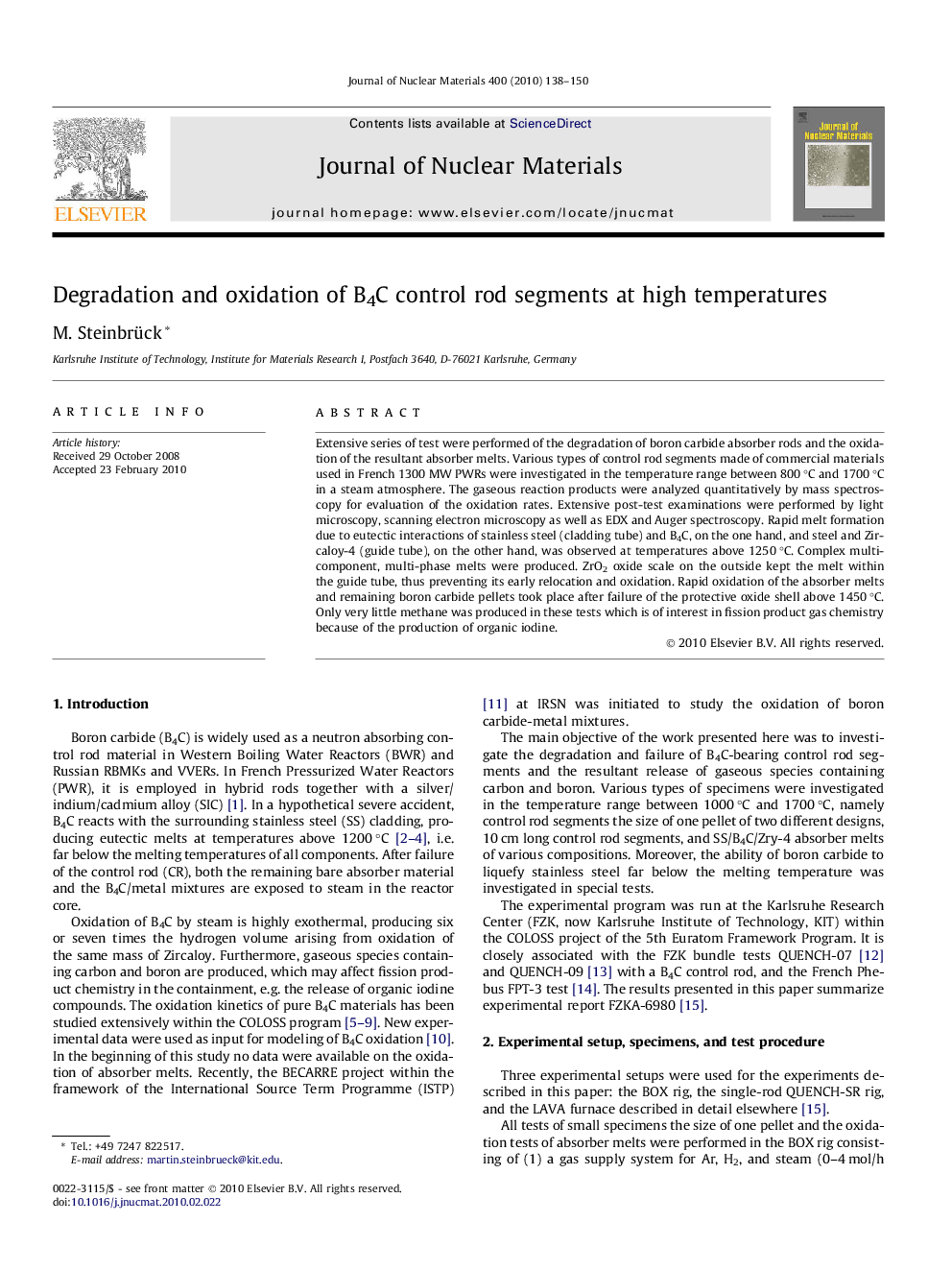| Article ID | Journal | Published Year | Pages | File Type |
|---|---|---|---|---|
| 1567652 | Journal of Nuclear Materials | 2010 | 13 Pages |
Abstract
Extensive series of test were performed of the degradation of boron carbide absorber rods and the oxidation of the resultant absorber melts. Various types of control rod segments made of commercial materials used in French 1300 MW PWRs were investigated in the temperature range between 800 °C and 1700 °C in a steam atmosphere. The gaseous reaction products were analyzed quantitatively by mass spectroscopy for evaluation of the oxidation rates. Extensive post-test examinations were performed by light microscopy, scanning electron microscopy as well as EDX and Auger spectroscopy. Rapid melt formation due to eutectic interactions of stainless steel (cladding tube) and B4C, on the one hand, and steel and Zircaloy-4 (guide tube), on the other hand, was observed at temperatures above 1250 °C. Complex multi-component, multi-phase melts were produced. ZrO2 oxide scale on the outside kept the melt within the guide tube, thus preventing its early relocation and oxidation. Rapid oxidation of the absorber melts and remaining boron carbide pellets took place after failure of the protective oxide shell above 1450 °C. Only very little methane was produced in these tests which is of interest in fission product gas chemistry because of the production of organic iodine.
Related Topics
Physical Sciences and Engineering
Energy
Nuclear Energy and Engineering
Authors
M. Steinbrück,
